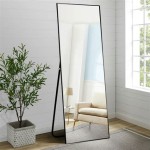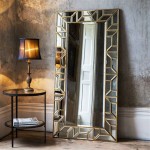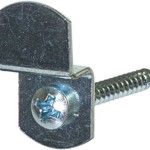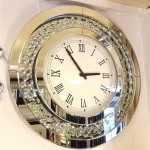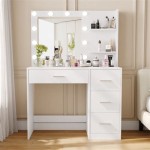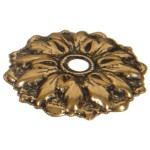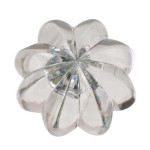What Height Should a Bathroom Mirror Be Hung?
Determining the ideal height for a bathroom mirror involves considering several factors, including the height of the individuals using the bathroom, the size and shape of the mirror, and the height of the vanity or sink. A properly hung mirror provides both functionality and aesthetic appeal, enhancing the overall usability of the bathroom.
A common guideline suggests the center of the mirror should be at eye level. However, "eye level" varies considerably among individuals. Therefore, it's more practical to consider the average eye level of the primary users of the bathroom. For adults, this typically falls between 5'4" and 6'0". Calculating the average eye level of household members can provide a more accurate starting point.
Once the average eye level is determined, consider the height of the vanity. The bottom edge of the mirror should typically be a few inches above the backsplash or countertop. This spacing prevents water splashes and toothpaste residue from marring the mirror's surface and simplifies cleaning. A general recommendation is a clearance of 5-10 inches between the vanity top and the mirror's bottom edge.
The size and shape of the mirror also play a crucial role in determining the appropriate hanging height. Larger mirrors offer a more expansive view and can be hung slightly higher than smaller mirrors. For a full-length mirror, the bottom edge should sit close to the floor, allowing for a complete head-to-toe reflection. For smaller, decorative mirrors, the placement can be more flexible, prioritizing aesthetic considerations over functionality.
Ceiling height significantly influences the overall perception of space within a bathroom. In bathrooms with lower ceilings, hanging the mirror slightly higher can create an illusion of increased height. Conversely, in bathrooms with high ceilings, hanging the mirror too high can make the space feel disjointed. Maintaining a balanced proportion between the mirror, vanity, and ceiling height is essential for achieving a harmonious aesthetic.
Beyond the standard guidelines, there are specific considerations for individuals with disabilities or specific needs. For wheelchair users, the mirror should be positioned lower to accommodate their seated perspective. Similarly, for children’s bathrooms, the mirror height should be adjusted to their eye level. Adapting the mirror height to the specific needs of the users ensures optimal functionality and accessibility.
Lighting plays a crucial role in optimizing the functionality of a bathroom mirror. Ensure adequate lighting illuminates the face evenly, minimizing shadows. Consider installing sconces or vertical lighting fixtures flanking the mirror to provide balanced illumination. Avoid placing lighting directly above the mirror, as this can cast unflattering shadows.
The type of mirror frame also influences the perceived size and placement. A large, ornate frame can visually dominate the space and may require a slightly higher placement to balance its presence. Conversely, a frameless mirror can blend seamlessly with the wall, offering more flexibility in placement.
When hanging multiple mirrors in a bathroom, maintain consistency in height and spacing. This creates a sense of visual order and prevents the space from feeling cluttered. Consider the overall layout of the bathroom and the placement of other fixtures when determining the optimal arrangement for multiple mirrors.
Before drilling holes in the wall, use painter’s tape to mark the desired mirror placement. This allows for visual assessment and adjustments before making permanent changes. Step back and view the marked area from different angles within the bathroom to ensure the placement is visually appealing and functional.
Ensure the mirror is securely mounted to the wall using appropriate hardware. The weight and size of the mirror will dictate the type of fasteners required. Consult a professional if unsure about the appropriate hardware or installation methods. A securely mounted mirror ensures safety and prevents accidental damage.
Properly hanging a bathroom mirror involves a combination of standard guidelines and individualized adjustments. Considering the average eye level of the users, the height of the vanity, the size and shape of the mirror, and the overall bathroom layout are key factors in determining the ideal height. Careful planning and attention to detail ensure a functional and aesthetically pleasing result, enhancing the usability and visual appeal of the bathroom.

How High Should You Hang The Mirror In A Bathroom With Photos Design Morsels

How High To Hang A Bathroom Mirror Homemate Mirrors

How To Pick And Hang The Perfect Bathroom Mirror Roomhints

Guide To Hanging Bathroom Vanity Lighting And Mirrors Liven Design
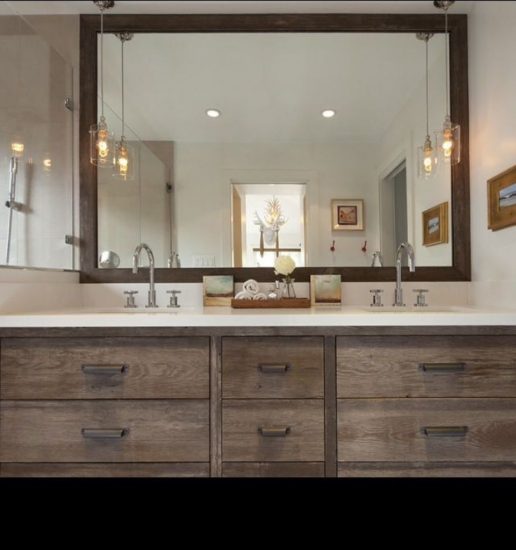
How High To Hang A Vanity Mirror Sparrow Stoll

How To Pick And Hang The Perfect Bathroom Mirror Roomhints

How High To Hang A Vanity Mirror Sparrow Stoll

How To Pick And Hang The Perfect Bathroom Mirror Roomhints

How High To Hang A Vanity Mirror Sparrow Stoll

How High To Place Your Bathroom Fixtures Inspired Style

